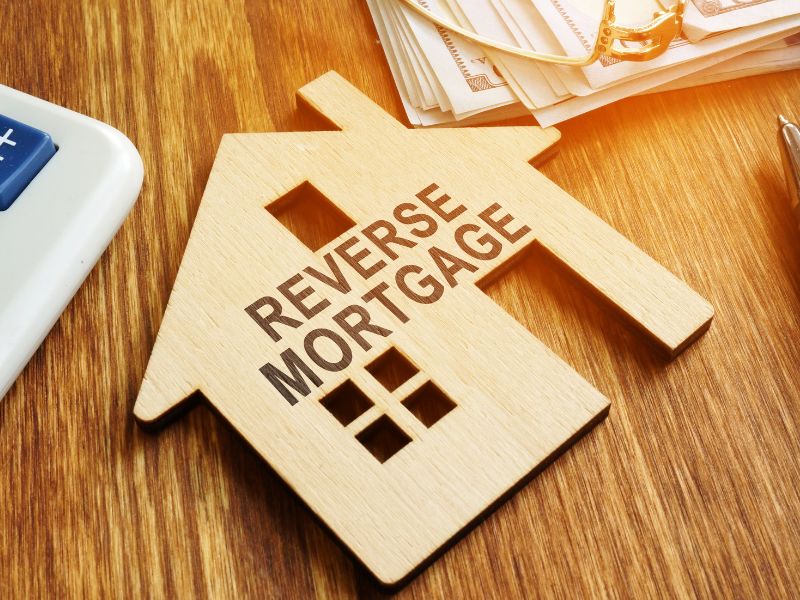
Retirement planning can feel overwhelming, but there’s one financial tool that’s helping many seniors enjoy financial freedom: the reverse mortgage. If you’re a homeowner aged 62 or older, this could be an option to turn your home equity into cash—without the burden of monthly mortgage payments. Is it the right choice for you? Let’s break it down in a way that’s easy to understand.
What Exactly is a Reverse Mortgage?
A reverse mortgage is a type of loan that lets seniors turn part of their home’s value into cash. Unlike a traditional mortgage, where you make monthly payments to a lender, in a reverse mortgage, the lender pays you. The best part? You don’t have to pay back the loan as long as you’re living in your home. It only needs to be repaid if you sell the house, move out for good, or pass away.
Example: Let’s say Alice, a retired homeowner, has a house worth $300,000. With a reverse mortgage, she might access 50% of her home equity, giving her $150,000 in cash. She can receive it in a lump sum, monthly payments, or a line of credit—whatever suits her best.
How Does a Reverse Mortgage Work?
Before you jump in, it’s important to understand the process. Here’s a step-by-step breakdown:
1. Check Your Eligibility & Get Counseling
- You need to be at least 62 years old and either own your home outright or have a good amount of equity.
- Plus, the home has to be your primary residence.
- You’re required to meet with a HUD-approved counselor to go over the details and ensure you understand the pros and cons.
2. Apply for the Loan
- Choose a St Louis mortgage lenders company (or a lender in your area) that specializes in reverse mortgages.
- The lender will review your application, consider your home’s value, and assess your eligibility.
3. Decide How You Want to Receive the Money
You can get the loan in a few different ways:
- Lump sum: A one-time payment.
- Monthly payments: Get a steady flow of cash each month.
- Line of credit: Withdraw money whenever you need it.
- Combination: Mix and match both options to fit your needs.
4. Keep Up with Your Responsibilities
- You don’t have to make monthly mortgage payments, but you do need to pay property taxes, homeowners insurance, and maintenance costs.
- If you fail to meet these obligations, your home could go into foreclosure.
5. Repayment Happens Later
- You’ll repay the loan when you sell your home, move out, or pass away.
- If the home sells for more than the loan amount, the remaining equity goes to you or your heirs.
Types of Reverse Mortgages
Not all reverse mortgages are the same. Here are the main options:
1. Home Equity Conversion Mortgage (HECM)
- The most common type is backed by the Federal Housing Administration (FHA).
- Offers flexibility in how you receive funds.
- Available through lenders like a St Louis mortgage lenders company.
2. Single-Purpose Reverse Mortgages
- Offered by state or local governments and nonprofits.
- Funds can only be used for a specific purpose (e.g., home repairs or property taxes).
- Lower-cost option but not widely available.
3. Proprietary Reverse Mortgages
- Provided by private lenders, not government-backed.
- Good for high-value homes, offering larger loan amounts.
- It might come with higher fees and stricter rules.
4. HECM for Purchase (H4P)
- Designed for seniors who want to buy a new home.
- Uses a reverse mortgage to finance the purchase, making it easier to relocate or downsize.
5. Jumbo Reverse Mortgages
- Designed for homes valued above FHA loan limits.
- It lets you borrow more money, but the interest rates might be higher.
6. Reverse Mortgage Line of Credit (RMLOC)
- It works like a credit card—you can borrow money whenever you need it.
- The unused credit amount can grow over time.
- A flexible option for those who want financial security without taking a lump sum.
Do You Qualify for a Reverse Mortgage?
Here are the basic requirements:
- You must be 62 or older.
- You need to either own your home outright or have a lot of equity.
- Your home has to be your main place of residence.
- You must be financially stable enough to cover property taxes and insurance.
- Your home must meet HUD property standards (single-family home, multi-unit up to four units, or approved condo).
- You must complete HUD-approved counseling before taking out the loan.
Is a Reverse Mortgage Right for You?
A reverse mortgage can be a great option for seniors looking for extra income, especially those who:
- Want to supplement their retirement savings.
- Prefer to stay in their home instead of downsizing.
- Have no plans to leave the home to heirs.
However, it’s not the best choice for everyone. If you plan to move soon, want to leave your home to your children, or struggle to keep up with property taxes and maintenance, a reverse mortgage might not be the best fit.
Final Thoughts
A reverse mortgage can provide financial freedom in retirement, but it’s important to fully understand how it works before making a decision. If you’re considering this option, talk to a St. Louis mortgage lenders company or a financial advisor to explore whether it’s the right move for you. With the right planning, a reverse mortgage can be a valuable tool to enjoy your golden years stress-free!